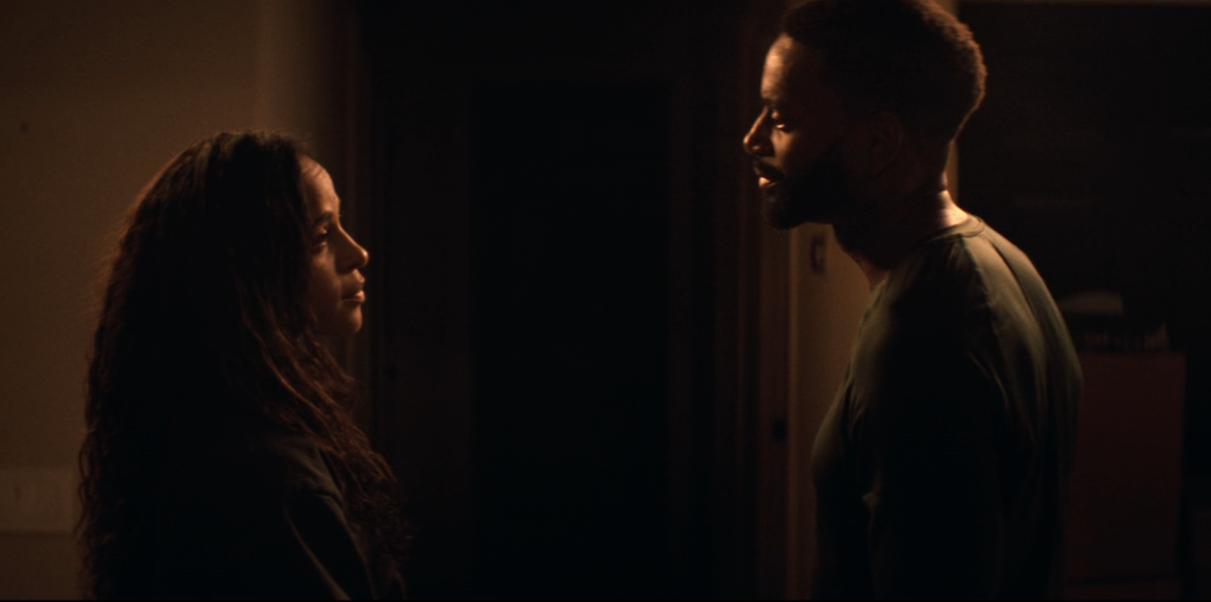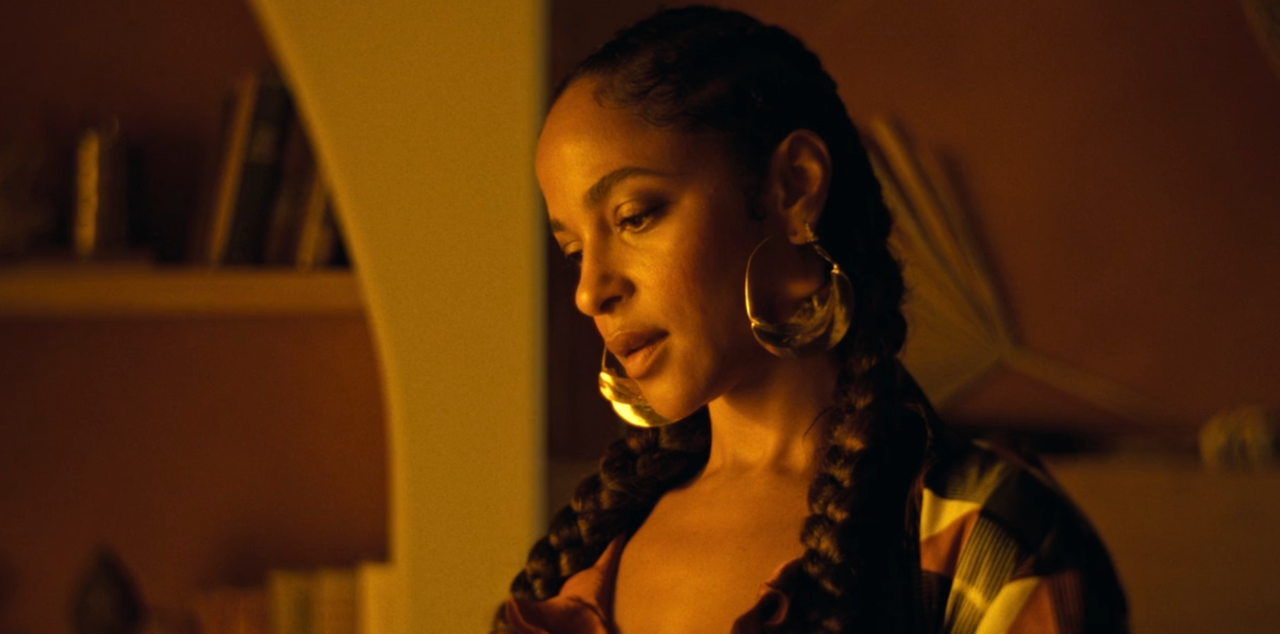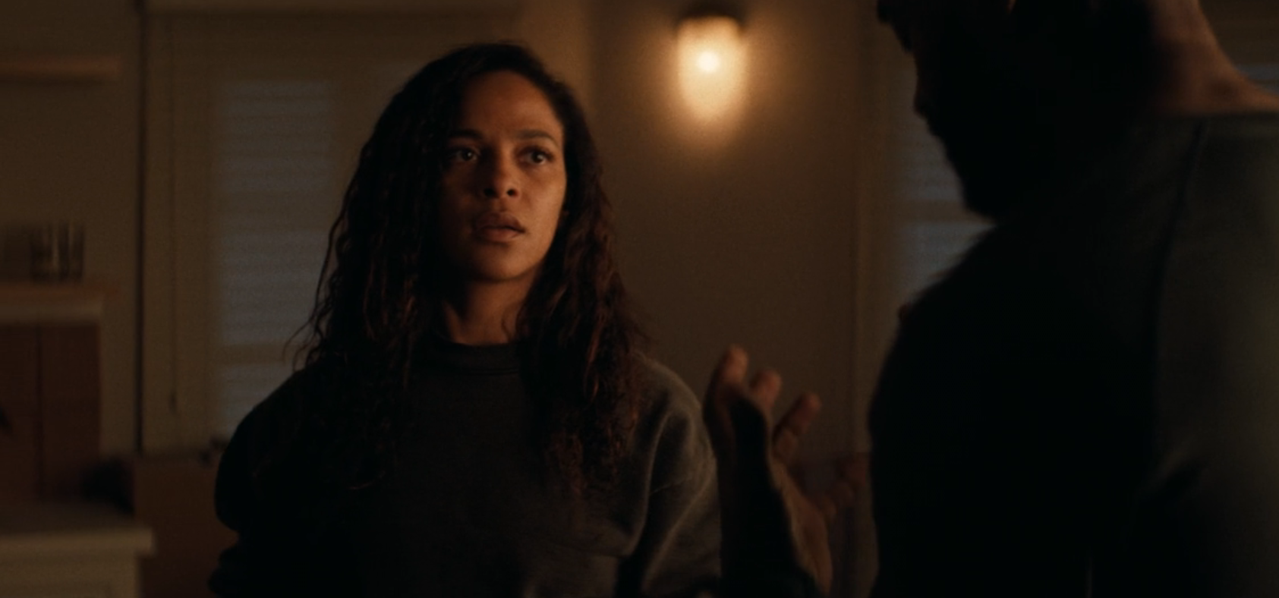Helmed by Jas Summers, Hulu’s ‘Stay’ tells the story of Miles and Kiara, a couple whose marriage is already at its breaking point by the time the story begins. However, things take an inexplicably supernatural turn when the two find themselves locked into the house, with no way of breaking out. When it becomes apparent that there are greater forces pinning them to this location, the horror unfolds, as household articles take a life of their own and the past blends in with the present. In the nightmarish events that follow, the couple’s feelings for each other are brought into question once again, and the only way out seems to be through a definitive answer. This horror romance drama uses its tightly spaced narrative to its advantage, focusing on the main duo’s relationship and its cracks and fissures, both major and minor. As such, the story of love and heartbreak takes on a universally recognizable form, made even richer with the horror elements.
Stay is a Fictional Tale Informed by the Writer’s Childhood Experiences
While ‘Stay’ is a fictional story penned by Jas Summers, its broader themes and emotional beats are loosely inspired by the writer-director’s real life. The narrative, which turns a journey through the house of horrors into a heartwrenching tale about losing one’s family, is in part borrowed from the experiences of Summers’ parents, who separated when he was young. In an interview with BLEX Media, he detailed “when I asked them years later what happened, they both answered through music — my mom with Whitney Houston’s Run to You, and my dad with Boyz II Men’s Water Runs Dry. That duality — love and pain, devotion and distance — became the foundation for STAY.” As such, the movie is as much an examination of the circumstances that bring a loving relationship to an end as it is about the aftermath and how it takes a toll on one’s psyche.

As Summers mentioned, music, along with other explorations of art and culture, takes on a big chunk of the narrative, creating a bed that elevates all of the other thematic underpinnings. To that end, Kiara’s history as an African Spirituality scholar is relevant to how magic and the supernatural are explored in this horror tale. The introduction of spirit communication channels is likely informed by real-life practices that claim to achieve the same effect, such as seances and Ouija boards. These activities, which are popular as both games and rituals all around the world, serve as the narrative’s bridge between the living and the dead, and they bring Kiara and Miles a moment of closure, as well as a way out of their suffering. While horror mysteries centered around houses are not uncommon in the creative industry, ‘Stay’ has a unique take on that storytelling structure, which ties spirituality and repressed memories to create a rich viewing experience.
Stay Brings Attention to Relationship Distress and How it Molds a Narrative
In the interview, Summers also speaks on the subject of horror and fear as storytelling instruments, and flips many conventional ideas on their head. When talking about his character’s psychologies, he stated, “We are often our own worst enemy. The real horror isn’t external. It’s what happens when we don’t confront the pain within ourselves.” The statement not only serves as a manual to interpret the narrative threads but also gives insight into the creative process. At any given point in the film, Kiara and Miles’ horror experiences have a secondary layer to them, which pushes the duo to have a heartfelt conversation. With each vision that takes on the protagonist’s mind, it becomes evident that the horror involved in the story is an extrinsic expression of the character’s deepest fears, and on top of that, their deepest wants. As such, a psychological lens can be used to view the overt paranormal happenings, revealing several new perspectives.

In a conversation with BLEX Media, actors Mo McRae and Megalyn Echikunwoke also expressed their personal experiences working on the film, as well as the questions it raises over the course of its runtime and beyond. McRae revealed that this was his first time working on a horror narrative, before adding a different side to the story: “I thought it was an incredible opportunity to showcase a Black couple dealing with extreme darkness — and love being the only light that could help them see their way through.” Echikunwoke also echoed that idea, while also stating that the movie’s compelling take on romantic pairings naturally evokes a sense of compassion, which she believes is essential to a relationship’s healing process. As such, the movie speaks to, and is shaped by, a grounded take on relationship troubles, providing a therapeutic base from which new developments can arise.
Read More: Is The Little Girl Who Lived a True Story? Is The Strigoi a Real Serial Killer?


